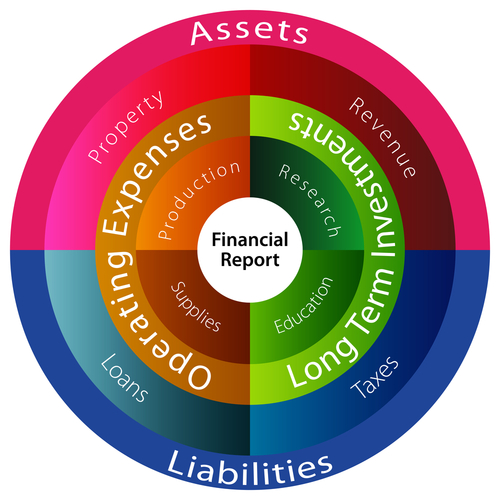Why analyze today’s comprehensive company financial reports?

A Google search will throw up a multitude of ratios and other financial analysis tools and for the inexperienced analyst the problem is not so much which tool to use as where to start. When faced for the first time with the financial statements of an unfamiliar company it is best to start by taking a systematic step-by-step approach to building a detailed financial analysis.
 Step 1 – Get An Overview
Step 1 – Get An Overview
An overview collects the 10-12 most important numbers for an extended period – it is usually possible to find financial reports online for 10 years or more for listed companies and this provides an opportunity to see how the business has performed and developed during its recent history. Key numbers might typically include sales revenues, operating profit, shareholders’ earnings, shareholders’ equity and debt; it is also helpful to track share data, including price, earnings and dividend per share.
Two simple techniques can be used to quickly provide a greater insight in to how the firm has performed: horizontal analysis measures the percentage change in these key numbers from one year to the next and provides a picture of significant trends over the period; vertical analysis expresses one number as a percentage of another – for example, gross profit, operating profit and shareholders’ earnings each shown as a percentage of sales revenue for each year. This so-called “common sizing” technique makes it easy to make a like-for-like comparison of key numbers for different years.
Step 2 – Use Ratio Analysis To Build Deeper Insights
The relationships between different numbers can provide the basis for key measures of financial performance, financial strength and risk; for example, a ratio based on profit and net asset investment provides a key measure of return on investment (ROI). Research shows that there is a strong link between improvements in ROI and company and shareholder value.
Other ratios are effective for measuring asset management efficiency, capital structure risk and short-term liquidity. Although often overlooked, a handful of other ratios can be used to give powerful insights in to the firm’s ability to generate cash and measure its ability to meet its debt obligations.
The real power of these ratios lies in the insights that are provided by comparing them with previous years’ ratios for the same company and by benchmarking them against competitors in the same industry, although in the latter case some caution is needed to ensure that comparisons are not distorted by significant differences in accounting policies.
Step 3 – Analyze Business Segments
Reading the consolidated financial statements of the largest companies it is easy to get the impression that the results of a single enterprise are being presented. In fact many of today’s largest companies are collections of quite different businesses: for example, in the 1990’s some of the UK’s largest supermarkets diversified in to financial services and opened banks. To get a real understanding of how financial performance is being driven through these companies it is necessary to drill down to see the performance of these different business segments and how they contribute to the revenues, profit and cash flows. The IASB standard sets out the requirements for providing business segment information in the financial report; the disclosure is by no means exhaustive but it does help to get a picture of how the different business units contribute to the overall results.
Building an Informed Opinion
Financial analysis is a good starting point for building a deep and informed opinion about a company prior to investing or perhaps considering an acquisition. In the age of the Internet this analysis can be further enhanced by the vast amount of additional information online about company and industry developments published by banks, financial institutions and specialist websites like Bloomberg and Financial Times.
Learn more about financial analysis on one of the highly acclaimed training seminars on “Advanced Financial Statement Analysis“.
This is an article written by a Senior business trainer and facilitator with GLOMACS specialising in business finance; competitive strategy & strategic planning; negotiation & influencing; innovation and leadership skills. He researches and develops courses on these topics, delivering training to private and public-sector delegates from many regions and backgrounds, working regularly in the UK, US, Middle East and Africa.
He will be presenting the much anticipated development training seminar “Advanced Financial Statements Analysis” in Dubai at The Fairmont Hotel from 18 – 22 February 2018.
This interactive Advanced Financial Statements Analysis training seminar will update and develop your skills in analysing business activities. It will guide you through the key steps of analysing financial statements, evaluating new investments and measuring the performance of your organisation. This training seminar will develop your ability to generate growth and improve profitability, as well as pinpointing problem areas for remedial action. You will have the opportunity to acquire skills and technical knowledge that will enable you to manage more effectively.


